私たちが今、当たり前のように楽しむお茶。その一杯には、800年以上にわたる壮大な歴史が溶け込んでいることをご存知でしょうか?かつては貴重な薬として扱われ、やがて権力者の富の象徴となり、そして静かに自己と向き合うための精神的な道へと昇華されていきました。茶道の歴史は、単なる飲み物の流行の変遷ではなく、日本の精神文化や美意識そのものの進化の物語なのです。
- 薬としての伝来と禅宗との固い結びつき
- 豪華な茶道具から精神性へ、「わび茶」の誕生
- 千利休による「道」の完成と現代への継承
すべては薬として始まった 鎌倉時代の茶
日本における茶の文化は、奈良・平安時代に遣唐使によってもたらされたのが始まりとされていますが、現代の茶道に直接つながる「抹茶」を飲む習慣は、鎌倉時代初期に始まりました。1191年、臨済宗の開祖である**栄西(えいさい)**が、宋(当時の中国)から茶の種子と抹茶の製法を持ち帰ったのがその起源です。
栄西が著した**『喫茶養生記(きっさようじょうき)』**には、「茶は養生の仙薬なり」と記されており、茶が心身を健やかに保つための薬として紹介されています。当初、抹茶は禅寺を中心に、厳しい修行中の僧侶たちが眠気を覚まし、精神を集中させるために飲まれる、貴重なものでした。このように、茶道はその黎明期から禅宗の精神と深く結びついていたのです。
豪華絢爛な「唐物」への憧れ 室町時代の茶
室町時代に入ると、茶の文化は武家社会へと広がります。特に三代将軍・足利義満らの時代には、中国から渡来した豪華な絵画や茶道具、いわゆる**「唐物(からもの)」**を飾り立てた会所で、盛大な茶会が開かれるようになりました。
これは「唐物荘厳(からものそうごん)の茶」と呼ばれ、高価な道具を客人に披露し、自身の権威や財力を示すことが主な目的でした。また、お茶を飲み比べて産地を当てる**「闘茶(とうちゃ)」**という遊びも大流行し、茶の湯は社交や娯楽としての側面を強めていきました。この時点では、後の時代に重んじられる精神性よりも、物質的な価値や華やかさが中心だったのです。
わび茶の祖、村田珠光から武野紹鴎へ
豪華絢爛な茶の湯が全盛期を迎える一方で、その風潮に疑問を呈し、新たな価値観を見出そうとする人物が現れます。それが、**村田珠光(むらたじゅこう)**です。珠光は、きらびやかな唐物だけでなく、冷え枯れて簡素な趣のある国産の道具(和物)の中にも美しさを見出しました。
彼は「仏法は茶湯の中にあり」と説き、茶を飲む行為を通じて精神性を高めることを目指しました。この**「わび茶」**の思想は、高価な道具を持つことではなく、不完全さや静けさの中にこそ豊かな心の世界が広がるという、まさに価値観の革命でした。
珠光の教えは、和泉国・堺の裕福な商人であった**武野紹鴎(たけのじょうおう)**に受け継がれます。紹鴎はわび茶の精神をさらに推し進め、茶の湯の簡素化、精神性の深化に貢献しました。経済力を持った町衆が文化の担い手となり始めた時代背景も、この新しい潮流を後押ししました。
千利休による「わび茶」の完成とその後
そして、茶道の歴史を語る上で欠かすことのできない人物、**千利休(せんのりきゅう)**が登場します。武野紹鴎の弟子である利休は、師たちの教えを基に、茶の湯からあらゆる無駄を削ぎ落とし、精神性を極限まで高めた「わび茶」を完成させました。
彼は、わずか二畳ほどの極小空間である**「草庵茶室」を創出し、身分の隔てなく誰もが頭を下げて入る「にじり口」を設えました。また、華美な唐物ではなく、手びねりによる素朴で温かみのある楽茶碗(らくぢゃわん)**を茶の湯の世界に導入するなど、独自の美意識を次々と打ち立てていきます。
織田信長や豊臣秀吉に仕え、茶頭として絶大な影響力を持った利休ですが、最後は秀吉と対立し、自刃を命じられます。しかし、利休の死後も、その「わび茶」の精神は彼の血を引く子孫たちによって大切に受け継がれました。利休の孫の代に表千家、裏千家、武者小路千家の「三千家」が成立し、それぞれが創意工夫を加えながら、その教えを現代にまで伝えているのです。
解説ポイント①:薬としての伝来と禅宗との固い結びつき
鎌倉時代に栄西がもたらした抹茶は、単なる嗜好品ではなく、最先端の健康法として日本に紹介されました。栄西が著した日本初の茶の専門書『喫茶養生記』では、茶の効能が具体的に説かれています。彼は、心臓の働きを活発にし、利尿作用を促し、眠気を覚ますなど、茶が五臓に良い影響を与えると記しました。当時の将軍、源実朝が二日酔いに苦しんだ際に、栄西が茶を献上して治したという逸話も残っています。このような薬としての側面が、まず武家社会の上層部に受け入れられるきっかけとなりました。同時に、禅宗の寺院では、座禅中の眠気を払い、精神統一を助けるための重要な飲料として、厳しい規律の中で飲まれるようになり、禅の思想と一体化しながら独自の文化を形成していきました。
解説ポイント②:豪華な茶道具から精神性へ、「わび茶」の誕生
室町時代中期まで、茶の湯の価値は、いかに高価で希少な「唐物」を所有しているかにかかっていました。しかし、応仁の乱を経て世の中が混沌とし、実力がものをいう下剋上の時代になると、旧来の権威に頼らない新しい価値観が生まれてきます。特に、自治都市として発展した堺では、経済力を持った町衆(商人)が文化の新たな担い手として台頭しました。彼らは、高価な道具をただ並べるだけの茶の湯に飽き足らず、より内面的で精神的な深みを求めるようになります。この流れの中で、村田珠光は「月も雲間のなきは嫌にて候(雲ひとつない満月よりも、雲間から見え隠れする月のほうに趣がある)」と語り、不完全さの中に美を見出す「わび」の精神を提唱しました。これが、経済力と新しい美意識を持った町衆の心をつかみ、「わび茶」が生まれる大きな原動力となったのです。
解説ポイント③:千利休による「道」の完成と現代への継承
千利休は、それまでの茶の湯を再構築し、一つの「道」として完成させました。彼の革新性は多岐にわたります。例えば、茶室の大きさ。それまでの書院造の広間で行われることが多かった茶会を、わずか二畳ほどの極限まで切り詰めた空間(待庵が代表例)で行いました。この狭い空間は、亭主と客人が物理的にも精神的にも密接に向き合うことを促します。また、道具においても、朝鮮のありふれた飯茶碗を「井戸茶碗」として見出し、その素朴な美しさを称揚したり、長次郎に命じて黒一色の「楽茶碗」を作らせたりするなど、既成概念を打ち破る美意識を提示しました。利休の死後、豊臣政権下で一度は途絶えかけた千家の茶道ですが、孫の宗旦(そうたん)がその精神を守り抜き、その息子たちが紀州徳川家(表千家)、加賀前田家(裏千家)、讃岐高松松平家(武者小路千家)といった大名家に仕官することで家を再興させました。これにより、茶道は武家社会の公式な教養(武家茶道)として、また町人たちの嗜みとして、広く社会に根付いていったのです。
参考文献
- 裏千家ホームページ「裏千家の歴史」: https://www.urasenke.or.jp/textb/history/
- 表千家不審菴「不審菴と表千家の歴史」: https://www.omotesenke.jp/chanoyu/history.html
- 国指定文化財等データベース「喫茶養生記」: https://kunishitei.bunka.go.jp/heritage/detail/201/1393
- 堺市「千利休と堺」: https://www.city.sakai.lg.jp/kanko/sakaishi/sakaishiro/senrikyu/index.html
【English Article】
【The Way of Tea】The Journey of a Cup from Medicine to Art
Have you ever considered that the cup of tea we enjoy so casually today is steeped in a grand history of over 800 years? It was once treated as precious medicine, later became a symbol of wealth for the powerful, and was eventually elevated into a spiritual path for quiet self-reflection. The history of the Japanese Tea Ceremony, or Sadō, is not merely a story of a beverage’s changing popularity, but a narrative of the evolution of Japan’s spiritual culture and aesthetics itself.
- Its introduction as medicine and its strong ties to Zen Buddhism.
- From luxurious tea utensils to inner spirituality: the birth of “wabi-cha.”
- The perfection of the “Way of Tea” by Sen no Rikyū and its legacy today.
It All Began as Medicine: Tea in the Kamakura Period
While the culture of tea in Japan dates back to the Nara and Heian periods, brought by envoys from Tang Dynasty China, the practice of drinking matcha (powdered green tea), which directly connects to the modern tea ceremony, began in the early Kamakura period. Its origin lies in 1191, when Eisai, the founder of the Rinzai school of Zen Buddhism, returned from Song Dynasty China with tea seeds and the method for making matcha.
In his book “Kissa Yōjōki” (Drinking Tea for Health), Eisai wrote, “Tea is a miraculous medicine for maintaining health,” introducing it as a remedy to keep the mind and body sound. Initially, matcha was a precious commodity consumed mainly in Zen temples by monks undergoing rigorous training to ward off drowsiness and enhance concentration. Thus, from its very dawn, the way of tea was deeply intertwined with the spirit of Zen.
Admiring Gorgeous “Karamono”: Tea in the Muromachi Period
Entering the Muromachi period, tea culture spread to the warrior class. During the time of Shogun Ashikaga Yoshimitsu and others, lavish tea gatherings were held in grand reception rooms, decorated with luxurious Chinese paintings and tea utensils, known as “karamono.”
This style, called “karamono sōgon no cha” (tea of magnificent Chinese objects), was primarily aimed at showcasing expensive utensils to guests, thereby demonstrating one’s authority and wealth. A game called “tōcha,” where participants would taste and identify the origin of different teas, also became wildly popular, strengthening the social and recreational aspects of tea gatherings. At this stage, material value and splendor were valued more than the spiritual depth that would be emphasized in later eras.
The Dawn of Wabi-cha: From Murata Jukō to Takeno Jōō
While extravagant tea gatherings were at their peak, a figure emerged who questioned this trend and sought a new set of values. That person was Murata Jukō. Jukō found beauty not only in brilliant karamono but also in simple, rustic domestic utensils (wamono) that had a “chilled and withered” quality.
He preached that “the law of the Buddha is also in the midst of tea,” aiming to elevate spirituality through the act of drinking tea. This philosophy of “wabi-cha” was a revolution in values, suggesting that a rich inner world could be found in imperfection and tranquility, rather than in the possession of expensive objects.
Jukō’s teachings were inherited by Takeno Jōō, a wealthy merchant from Sakai, a port city near Osaka. Jōō further advanced the spirit of wabi-cha, contributing to the simplification and spiritual deepening of the tea ceremony. The historical context, where empowered townspeople (merchants) began to lead cultural trends, also supported this new movement.
The Perfection of “Wabi-cha” by Sen no Rikyū and Beyond
And then appears the most indispensable figure in the history of the tea ceremony: Sen no Rikyū. A disciple of Takeno Jōō, Rikyū built upon his masters’ teachings to perfect “wabi-cha,” a style that stripped away all excess from the tea ceremony and elevated its spirituality to the extreme.
He created the “sōan chashitsu” (grass-thatched hut tea room), a tiny space of just two tatami mats, and designed the “nijiriguchi,” a small entrance that forced everyone, regardless of rank, to bow their head to enter. He also introduced his own aesthetic, such as commissioning the simple, warm, hand-molded Raku ware tea bowls instead of flashy karamono.
Rikyū served under Oda Nobunaga and Toyotomi Hideyoshi, wielding immense influence as a tea master. However, he eventually clashed with Hideyoshi and was ordered to commit ritual suicide. Despite his tragic end, Rikyū’s spirit of “wabi-cha” was carefully preserved by his descendants. In the generation of his grandsons, the “San-Senke” (Three Sen Families) were established: Omotesenke, Urasenke, and Mushakōjisenke. Each has passed down his teachings to the present day, adding their own creativity and ingenuity along the way.
Analysis Point ①: Its introduction as medicine and its strong ties to Zen Buddhism
The matcha brought by Eisai in the Kamakura period was introduced to Japan not merely as a luxury item but as a cutting-edge health practice. In “Kissa Yōjōki,” Japan’s first specialized book on tea, its benefits were detailed. Eisai wrote that tea invigorates the heart, promotes diuresis, and dispels drowsiness, positively affecting the five major organs. An anecdote tells of how Shogun Minamoto no Sanetomo, suffering from a hangover, was cured after Eisai presented him with tea. This medicinal aspect helped it gain acceptance among the upper echelons of the warrior class. Simultaneously, in Zen temples, it became an essential beverage for maintaining focus during long Zazen meditation sessions. It was consumed under strict discipline, becoming culturally integrated with Zen philosophy.
Analysis Point ②: From luxurious tea utensils to inner spirituality: the birth of “wabi-cha”
Until the mid-Muromachi period, the value of a tea gathering was determined by the host’s possession of expensive and rare “karamono.” However, as the country fell into chaos after the Ōnin War and a new social order of “gekokujō” (the low overthrowing the high) emerged, new values independent of traditional authority began to form. In Sakai, which flourished as a self-governing city, empowered merchants became the new bearers of culture. They grew dissatisfied with tea gatherings that merely displayed expensive items and began to seek deeper, more internal and spiritual fulfillment. It was in this current that Murata Jukō advocated for the spirit of “wabi,” famously stating, “I dislike the moon with no clouds,” finding more beauty in imperfection. This resonated with the merchants, who possessed both economic power and a new aesthetic sense, becoming the driving force behind the birth of “wabi-cha.”
Analysis Point ③: The perfection of the “Way of Tea” by Sen no Rikyū and its legacy today
Sen no Rikyū restructured the existing tea ceremony and perfected it as a “Dō” or “Way.” His innovations were manifold. For example, the size of the tea room. He shifted tea gatherings from the spacious halls of the shoin-zukuri architectural style to extremely confined spaces, some as small as two mats (the Taian teahouse being a prime example). This intimate setting encouraged hosts and guests to engage more closely, both physically and spiritually. In terms of utensils, he broke with convention by finding beauty in common Korean rice bowls, elevating them as “Ido chawan,” and by commissioning the potter Chōjirō to create monochromatic black “Raku” bowls. After Rikyū’s death, the Sen family’s way of tea, once endangered under the Toyotomi regime, was preserved by his grandson, Sōtan. Sōtan’s sons later secured the family’s legacy by serving as tea masters to powerful feudal lords, including the Kishu Tokugawa clan (Omotesenke), the Kaga Maeda clan (Urasenke), and the Takamatsu Matsudaira clan (Mushakōjisenke). This established the tea ceremony as an official part of warrior-class education (buke-sadō) and as a refined pursuit for townspeople, ensuring its deep roots in Japanese society.
References
- Urasenke Official Website, “History of Urasenke”: https://www.urasenke.or.jp/textb/history/ (Japanese)
- Omotesenke Fushin’an, “History of Fushin’an and Omotesenke”: https://www.omotesenke.jp/chanoyu/history.html (Japanese)
- Database of Designated National Cultural Properties, “Kissa Yōjōki”: https://kunishitei.bunka.go.jp/heritage/detail/201/1393 (Japanese)
- Sakai City, “Sen no Rikyū and Sakai”: https://www.city.sakai.lg.jp/kanko/sakaishi/sakaishiro/senrikyu/index.html (Japanese)
伝

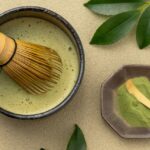
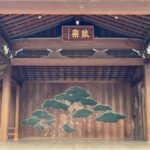

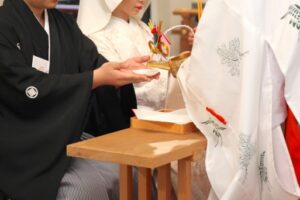
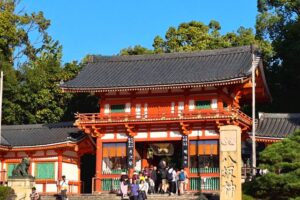
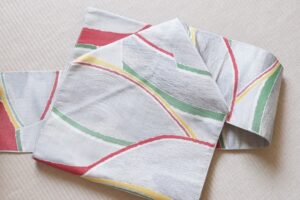

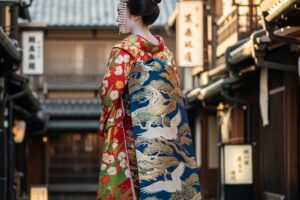
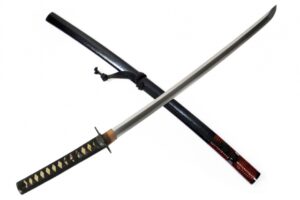
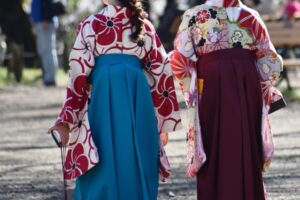
コメントを残す